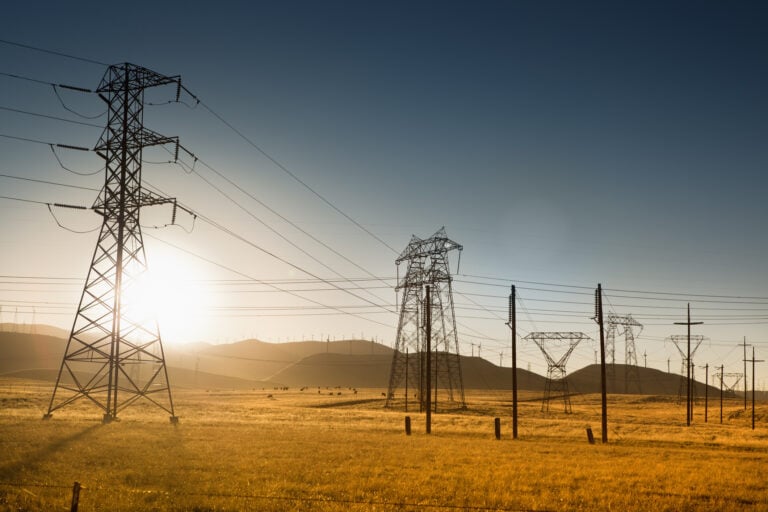
California’s transmission and distribution grid networks will need to expand fourfold and tenfold respectively, as part of a total US$370 billion investment into grid infrastructure and utility-scale clean energy by 2045, if the state is to meet its net zero decarbonisation target.
In light of the state’s Assembly Bill (AB) 1279 which wrote the net zero commitments into law in 2022, Californian utility holding company Edison International has updated its predictions on what is needed for a feasible transition to an electrified, carbon-neutral power system.
Unlock unlimited access for 12 whole months of distinctive global analysis
Photovoltaics International is now included.
- Regular insight and analysis of the industry’s biggest developments
- In-depth interviews with the industry’s leading figures
- Unlimited digital access to the PV Tech Power journal catalogue
- Unlimited digital access to the Photovoltaics International journal catalogue
- Access to more than 1,000 technical papers
- Discounts on Solar Media’s portfolio of events, in-person and virtual
AB 1279 calls for a feasibility report by 2035, but Edison claims that its findings show feasibility issues which must be taken into account before that date.
The Countdown to 2045: Realizing California’s Pathway to Net Zero report forecasts that electricity demand in the state will increase by 80% by 2045, and 90% of vehicles and 95% of buildings will need to be electrified if net zero is to be reached. To support widespread adoption of electric vehicles and electric heat pumps will require an “unprecedented” clean infrastructure buildout in the power sector, the report said.
Grid upgrades
California Independent Systems Operator (CAISO) grid capacity has grown by about 2GW/year in the last two years, Edison said, but will need to increase to around 8GW/year through to 2045 if it is to keep pace with the targets. The report said CAISO’s transmission network currently consists of around 26,000 circuit miles; adding another 120GW of new clean energy capacity – which Edison said is needed – will require another 20,000 miles of 500kV transmission, representing around US$75 billion.
CAISO approved a, somewhat scaled back, transmission plan in May that would add 45 projects with a potential solar PV capacity addition of 17GW over the next decade.
Edison also said that the distribution grid connecting its electricity customers to power will need to be expanded at tenfold its historical rate. An incremental investment of around US$50 billion will be needed to deploy around 1,400 new distribution circuits, the equivalent of 85 new distribution substations, and upgrade more than a third of the existing substations.
“The stakes are higher than they have ever been for expanding the electric system to meet decarbonisation goals safely, reliably and affordably,” said Pedro J Pizarro, president and CEO of Edison International.
The report itself reiterated that: “More than ever before, clarity is urgently needed to ensure the most cost-effective upgrades are built in time to interconnect new resources.”
Under the Rate Base legislation of the California Public Utility Commission (CPUC), utilities like Edison can earn a rate of return based on the value of their assets which could be expressed in electricity rates for customers. A higher value of owned assets can correspond to higher rates of return. The CPUC sets the rates for generation and the distribution network, whilst the Federal Energy Regulatory Commission sets the rates for transmission.
It highlighted permitting clarity and commitments to CAISO’s reforms as key ways to expand the transmission network, calling for: “Significant reform in planning, permitting and siting processes” to enable the buildout.
For the distribution network, the report called for: “New designs, such as higher distribution voltages, direct current and mesh distribution systems that can increase the capacity, reliability and resiliency of the grid, as well as increase coordination and integration with ‘at-the-meter’ and ‘behind-the-meter’ technologies.”
The report also called for the state to look beyond CAISO’s immediate borders to ensure its energy security, taking a more regional approach and expanding its reach which Edison said would increase the available resources, benefit all of the western US states and drive down prices for consumers.
Concerns over the US grid aren’t isolated to California. At the end of 2022, the Lawrence Berkeley National Laboratory reported that there were 1TW worth of solar PV projects waiting in interconnection queues across the US, and earlier this year the US Energy Information Administration found that Texas grid operator ERCOT was in danger of significant curtailments on its renewables generation if it fails to upgrade its transmission infrastructure.







